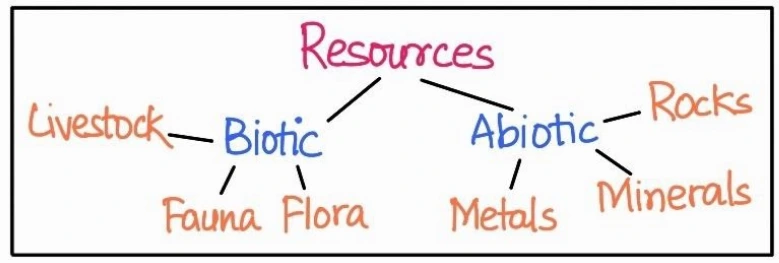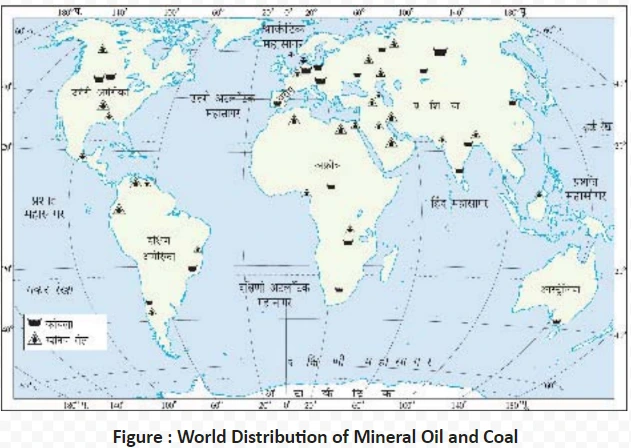![]() 12 Dec 2023
12 Dec 2023
Biotic and abiotic resources form the fundamental pillars of Earth’s ecosystems, representing distinct elements that sustain life and contribute to the planet’s ecological balance. Biotic resources encompass living organisms, including plants, animals, and microorganisms, crucial for biodiversity and ecosystem dynamics. This intricate web of biotic and abiotic elements forms the foundation of Earth’s ecological balance. In contrast, abiotic resources comprise non-living elements such as air, water, minerals, and sunlight, playing essential roles in supporting life and shaping the environment. This distinction emphasizes the symbiotic relationship between biotic and abiotic factors in sustaining Earth’s ecosystems.

(i) Biotic Resources
(ii) Abiotic Resources


Earth’s mineral wealth is intricately shaped by the dynamic interplay of biotic and abiotic factors. This relationship governs the formation, distribution, and accessibility of resources, impacting both natural processes and human endeavors. Understanding and respecting this delicate balance between biotic and abiotic elements is crucial for sustainable resource management and the continued well-being of our planet.
<div class="new-fform">
</div>